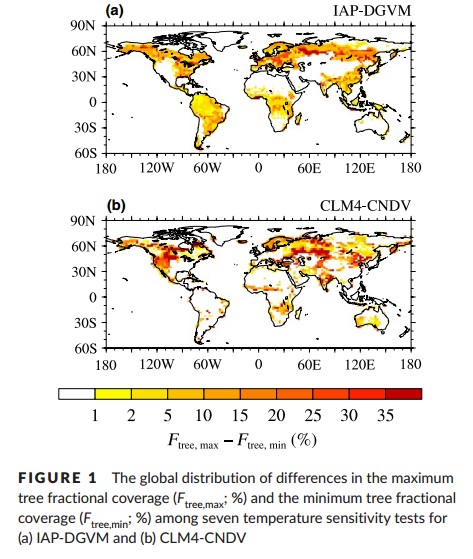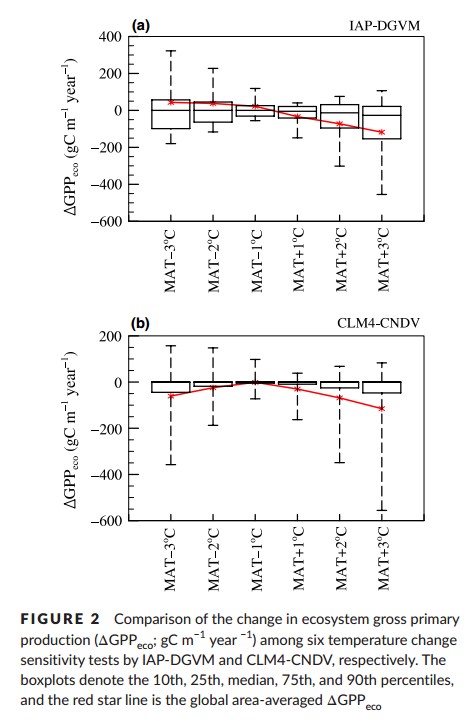最新科研进展
Evaluating the responses of forest ecosystems to climate change and CO2 using dynamic global vegetation models
Authors:
Song Xiang1 and Zeng Xiaodong1,2,3
1 International Center for Climate and Environment Sciences, Institute of Atmospheric Physics, Chinese Academy of Sciences, Beijing, China
2 Collaborative Innovation Center on Forecast and Evaluation of Meteorological Disasters, Nanjing University of Information Science & Technology, Nanjing, China
3 University of Chinese Academy of Sciences, Beijing, China
Abstract:
The climate has important influences on the distribution and structure of forest ecosystems, which may lead to vital feedback to climate change. However, much of the existing work focuses on the changes in carbon fluxes or water cycles due to climate change and/or atmospheric CO2, and few studies have considered how and to what extent climate change and CO2 influence the ecosystem structure (e.g., fractional coverage change) and the changes in the responses of ecosystems with different characteristics. In this work, two dynamic global vegetation models (DGVMs): IAP-DGVM coupled with CLM3 and CLM4-CNDV, were used to investigate the response of the forest ecosystem structure to changes in climate (temperature and precipitation) and CO2 concentration. In the temperature sensitivity tests, warming reduced the global area-averaged ecosystem gross primary production in the two models, which decreased global forest area. Furthermore, the changes in tree fractional coverage (ΔFtree; %) from the two models were sensitive to the regional temperature and ecosystem structure, i.e., the mean annual temperature (MAT; °C) largely determined whether ΔFtree was positive or negative, while the tree fractional coverage (Ftree; %) played a decisive role in the amplitude of ΔFtree around the globe, and the dependencewas more remarkable in IAP-DGVM. In cases with precipitation change, Ftree had a uniformly positive relationship with precipitation, especially in the transition zones of forests (30% < Ftree < 60%) for IAP-DGVM and in semiarid and arid regions for CLM4-CNDV. Moreover, ΔFtree had a stronger dependence on Ftree than on the mean annual precipitation (MAP; mm/year). It was also demonstrated that both models captured the fertilization effects of the CO2 concentration.
Key words:
climate change, CO2 concentration, dynamic global vegetation model, forest ecosystem, tree fractional coverage


Citation:
Song X and Zeng X D, 2017: Evaluating the responses of forest ecosystems to climate change and CO2 using dynamic global vegetation models. Ecology and Evolution, 7, 997-1008. DOI: 10.1002/ece3.2735
